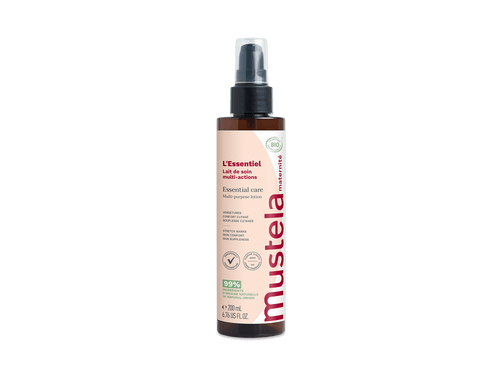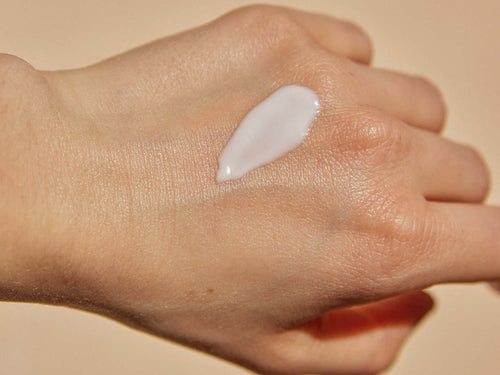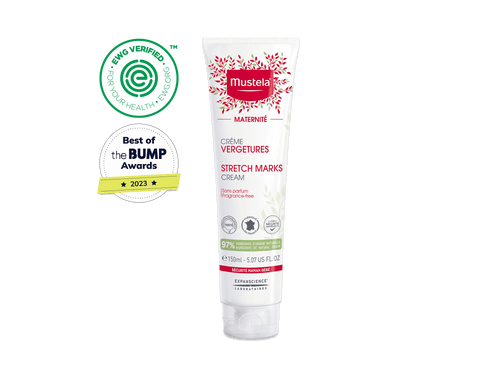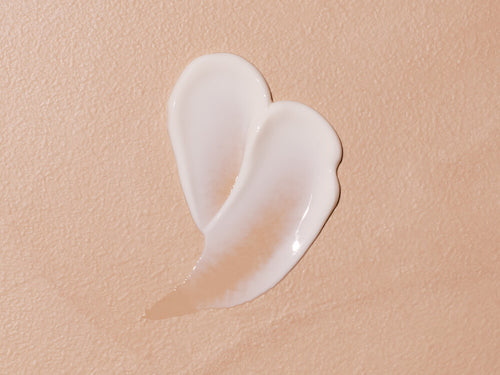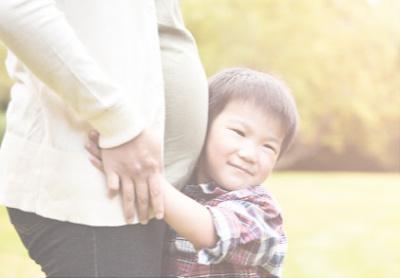With a tiny one in your arms, there’s a whole new world to discover. “Baby-led weaning” is one of those baby things that might have you scratching your head. Or, maybe you know what it’s all about and are ready to dive in. Either way, you’re in the right place.
In this article, we’ll start by explaining what baby-led weaning is (it may not be what you think!), and then we’ll go over a few pros and cons of this feeding option. Then, if you’re ready to take the plunge, read our tips on how to start.
What Is Baby-Led Weaning?
In the United States, when we hear the word “weaning,” we think of slowly but surely transitioning your baby off of breastmilk or formula to only solid foods.
However, in other countries, the word has a slightly different meaning: the introduction of food other than formula or breastmilk.
So, baby-led weaning consists of offering solid food to your baby but letting them feed themselves and take the lead with when, what, and how much they eat.
This method of introducing food to little ones gained popularity in the early 2000s and even more so with the publication of Gill Rapley’s book on baby-led weaning in 2008.

How does this work exactly? The idea is that you begin introducing solid food to your baby as usual at six months old, but instead of offering pureed baby food, your baby begins directly with finger food.
And this food makes its way to your baby’s mouth however they want, without help from you.
Keep in mind that this is a method of introducing solid food and is not the end of formula-feeding or breastfeeding! Formula or breastmilk will continue to be your baby’s main source of nutrition for quite some time.
Since this is so different from the baby food and airplane-spoon approach, let’s take a look at some of the pros and cons of baby-led weaning.
Pros And Cons Of Baby-Led Weaning
Pros Of Baby-Led Weaning

One of the big pros of baby-led weaning is simply that it allows your baby to set the pace and try food on their own.
This helps to develop their fine motor skills and involves all of their senses as they explore the wide world of food for themselves! They experience a variety of tastes and textures as they go.
Another advantage is that your little one self-regulates and learns to stop eating when they are ready or feel full.
And, of course, a big pro for you as a parent is that you won’t be mixing, mashing, and storing baby food. With baby-led weaning, your baby can often eat some of what your whole family eats, or you can quickly prepare chunks or slices of appropriate food.
Cons Of Baby-Led Weaning
As you can see, there are many positive aspects to baby-led weaning, but there are also a few factors that can be limiting.
First of all, it’s not appropriate for babies with special needs, developmental delays, or cognitive delays.
Secondly, baby-led weaning can be messy. Since it’s more about your baby exploring food, they will mash, drop, and splatter what you give them. Sometimes, very little makes it into their mouth!
This mess is part of the process, but it can be a headache and a financial strain since some food may be “wasted.”
How To Start Baby-Led Weaning
Ready to learn more about the actual process of doing baby-led weaning with your little one? Here are some tips for how to go about it.
Make Sure Your Baby Is Ready
Typically, babies who are over six months old are developmentally ready to start baby-led weaning, but you’ll still need to be sure it’s the right time for your little one.
Most importantly, your baby should be able to sit up with support and have good neck control. In addition, make sure that they are starting to put things in their mouth, sucking on things (no matter what it is), and taking an interest in food.
Don’t Stop Breastfeeding
The second important thing to keep in mind when starting baby-led weaning is that this is not the end of breastfeeding or formula feeding!
Baby-led weaning is about introducing finger foods, not weaning your baby off of breastmilk or bottles.
Be Flexible

Know that baby-led weaning will be messy. Prepare yourself, be flexible, and enjoy the process as you watch your baby discover one more aspect of the world.
That said, there’s nothing wrong with prepping the area to make cleanup as easy as possible. Try using a big bib and placing newspapers, a towel, or a trash bag under your baby’s highchair. Have baby wipes handy for quick and easy cleanup for your little one’s hands and face, too.
We recommend wipes that will be gentle on your baby’s skin, like Mustela’s Cleansing Wipes. These hypoallergenic wipes are perfect for everything from washing up after a messy meal to tidying your baby’s diaper area and even taking off your own makeup!
They’re made with high-quality, all-natural ingredients, like avocado perseose to moisturize and reinforce the skin’s protective layer as well as aloe vera leaf extract to soften and soothe dry skin.
Another great option is our Certified Organic Cotton Wipes with Water. These fragrance-free wipes are designed to gently cleanse your baby’s skin, leaving it soothed, soft, fresh, and moisturized.
Choose The Right Food
What sort of finger food is right for baby-led weaning? As you begin, stick with single-ingredient food so you can put your finger on any food intolerances or allergies and don’t add any salt or sugar to your baby’s food.
Here are some ideas of what foods work and how to prepare them:
- Sliced bananas, strawberries, or ripe pears
- Squished blueberries or beans
- Sliced avocado or tomato
- Steamed sweet potato or broccoli
- Strips of carrots, beets, or roasted zucchini
- Hard-boiled egg cut into pieces
- Strips of whole-grain toast, pita bread, pancakes, and the like
- Whole wheat pasta
Prepare The Food Appropriately

While baby-led weaning means you don’t have to blend and mash baby food, you will need to cut or chop whatever you offer your baby.
If you start introducing solid foods at six months old, for the first couple of months your baby will appreciate food that is cut into circles or long, thin strips.
Once they’ve developed their pincer grasp (around nine months old), they’ll have an easier time picking up small, bite-sized chunks of food.
Stay Safe
Especially at the beginning of baby-led weaning, your baby may gag. This is OK and one of the body’s natural protective mechanisms.
Keep an eye on your little one, but don’t worry. Your baby’s gag reflex will lessen as they figure out this solid food thing and grow older.
Choking, however, is a different story. It happens when food blocks your baby’s windpipe and requires your immediate intervention. This is why you want to be nearby and vigilant at all times when your baby is eating.
How can you tell the difference between choking and gagging? Gagging is noisy and choking usually isn’t. When your baby is gagging, they may cough and sputter. Meanwhile, a choking baby can’t breathe or make noise and may be gasping.
It’s a good idea to verse yourself in the baby Heimlich maneuver and avoid foods that are choking hazards.
Another aspect of safety is to keep an eye out for signs of a food allergy and take your child to the doctor if you notice something amiss.
Take Care Of Yourself

Yes, we’re talking to you, momma or daddy! Take care of yourself as you navigate the waters of raising a baby.
With a little one around, life is constantly changing, and you may be constantly evaluating your performance as a parent. Try to enjoy this new adventure, take deep breaths when needed, have grace for yourself, and be sure to continue to take care of yourself.
This is important for breastfeeding moms since you’ll still be nursing even once your baby starts on solid foods. Care for your nipples with Mustela’s Nursing Comfort Balm, a soothing and restorative nipple cream that keeps your skin comfortable while nursing.
This lanolin-free balm moisturizes and protects your nipples, eases discomfort, and helps to replenish and restore your skin during and after breastfeeding.
Made with 100% naturally derived ingredients, our nipple cream is vegan and free of fragrance, dye, parabens, phthalates, and phenoxyethanol. What’s not to love?
Our Certified Organic Range is also ideal for caring for yourself as well as your little one with clean and effective skincare essentials for the whole family. The range is vegan and completely fragrance-free.
Developed in partnership with parents, midwives, pharmacists, and an NGO, this specially designed range is safe enough to use on babies and effective enough to be used by mom and dad, too.
Yum, Yum!

It’s exciting to start offering solid foods to your little one and watch them taste and try new things. Baby-led weaning allows you to introduce your baby to food while allowing them to set the pace.
Knowing the pros and cons of this food-introduction method, you are equipped to decide if it’s right for your little one and your family.
If it’s a go, follow the tips we listed in this article, and be prepared for the mess that’s bound to occur with our gentle Cleansing Wipes, Certified Organic Cotton Wipes with Water, or Certified Organic Micellar Water with Olive Oil and Aloe.
And remember that it’s no big deal if your baby doesn’t actually ingest much. The beginning of the process is all about licking, tasting, exploring, and learning to love food. Yum, yum!



